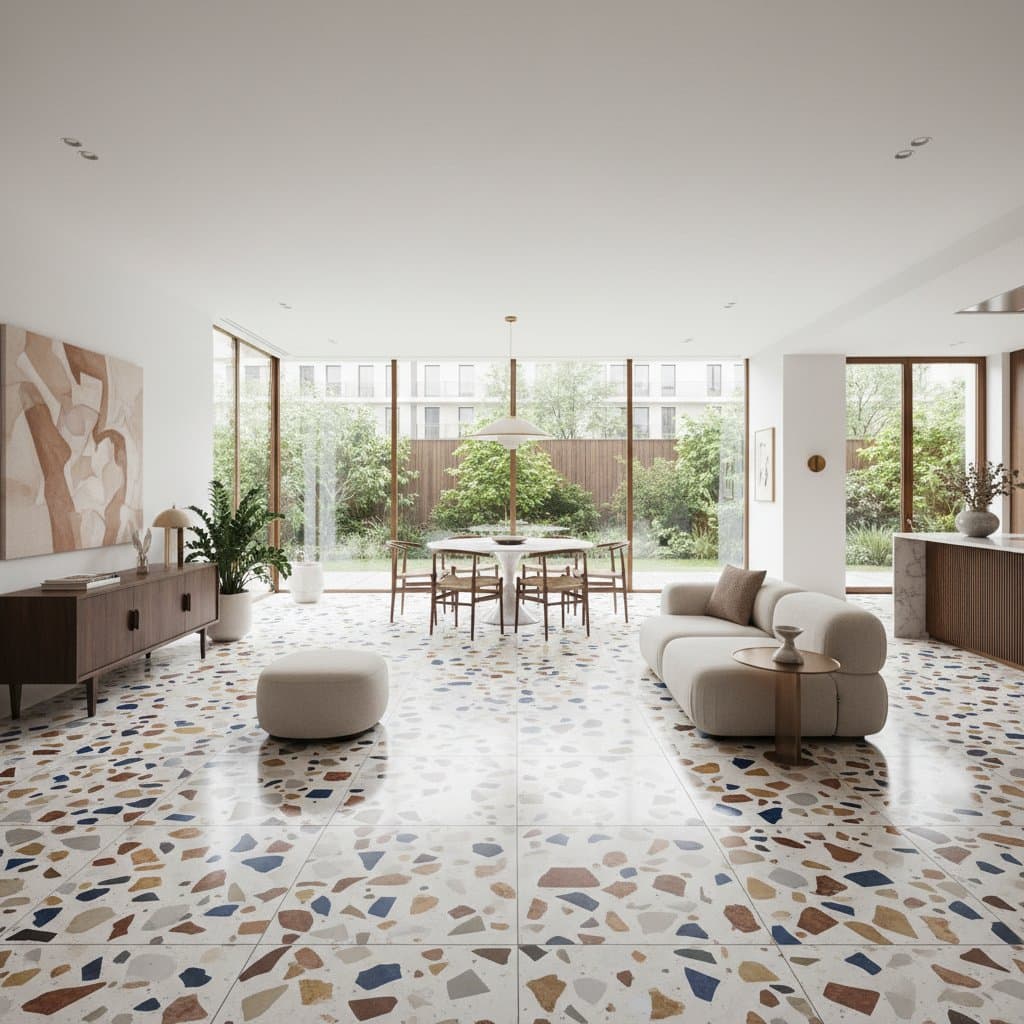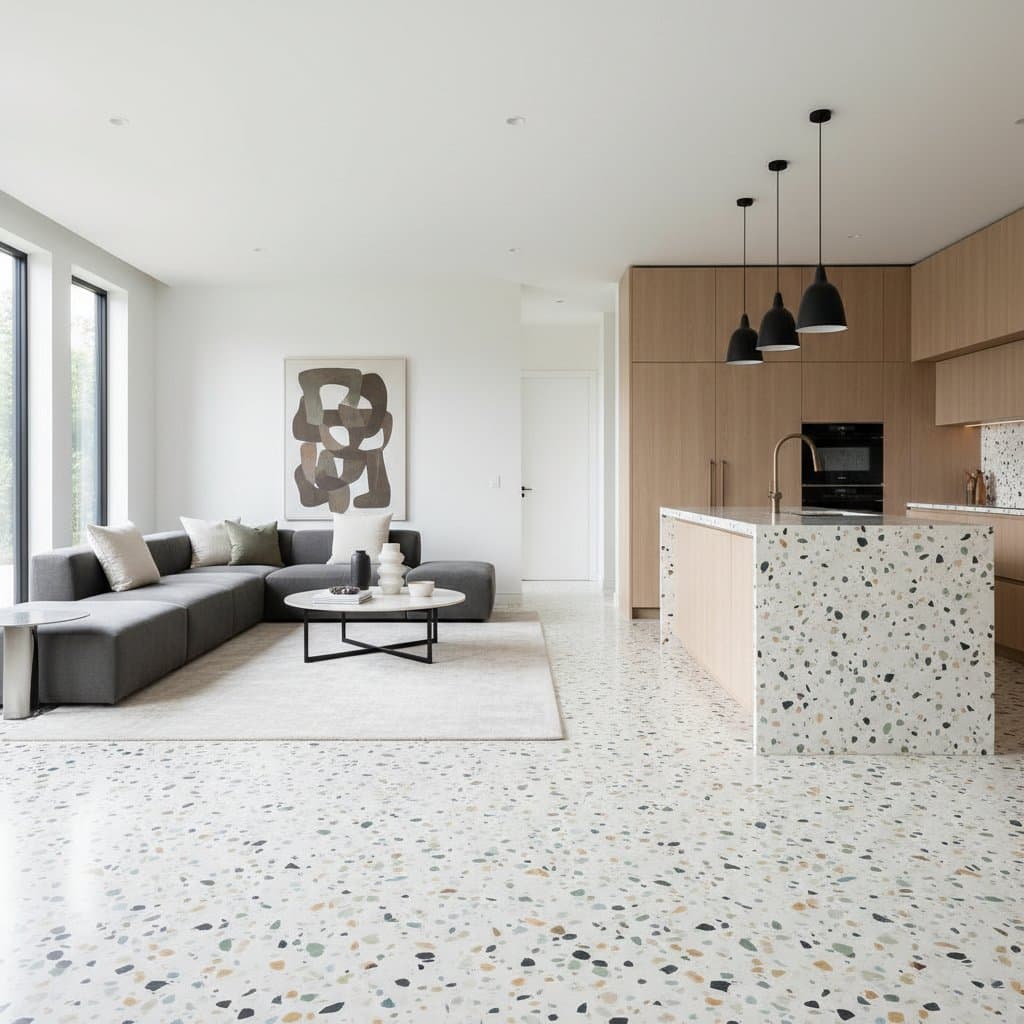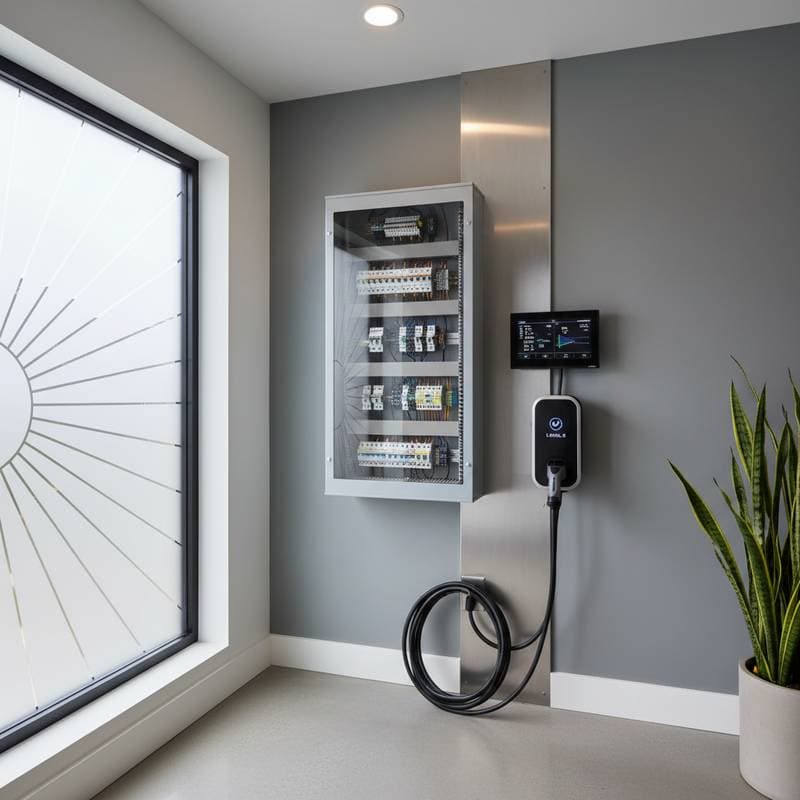Why Terrazzo Commands Premium Prices in 2025 Homes
Terrazzo flooring costs more than most surface materials, yet homeowners select it for its exceptional longevity, design flexibility, and low maintenance requirements. This material fits high-end residences, contemporary renovations, and sustainable constructions that prioritize both aesthetics and durability.
This guide details the elements that contribute to terrazzo's elevated cost, outlines the installation process, and provides guidance on determining whether it aligns with a specific home and financial plan.
Cost Snapshot
National range: $30 to $100 per square foot
Typical installed range: $40 to $70 per square foot
Outliers: Custom formulations with specialty aggregates or intricate layouts may exceed $120 per square foot
Key cost drivers:
- Selection and size of aggregates
- Type of binder, whether cement or epoxy
- Labor and equipment required for grinding and polishing
- Preparation of the subfloor, including moisture management
- Intricacy of patterns or inlaid designs
Terrazzo demands a higher initial investment than ceramic tile or vinyl, but its service life frequently surpasses fifty years with only occasional repairs.
Options and Types
Cement Terrazzo
This traditional variant employs a cement binder. The mixture proves thicker and heavier, making it appropriate for ground-level applications or floors integrated with structural concrete. It delivers a natural matte appearance and withstands outdoor conditions effectively.
Epoxy Terrazzo
This version utilizes a resin binder, enabling thinner applications and quicker installation timelines. Its lighter weight suits renovation projects or upper-level floors. The finish offers vibrant colors and a high-gloss sheen.
Polyacrylate Terrazzo
This hybrid approach incorporates flexible properties. It performs reliably in environments subject to thermal expansion or vibrations. Installers often apply it in commercial settings or residential areas with heavy foot traffic.
Precast Terrazzo
Manufactured in factory settings as slabs or tiles, this type installs similarly to natural stone. It minimizes on-site labor demands, though it restricts options for expansive custom patterns. Professionals recommend it for countertops, staircases, or confined areas.
Step-by-Step Installation Process
- Inspect the subfloor thoroughly for cracks, unevenness, or moisture problems.
- Prepare the surface through cleaning and application of a primer or bonding agent.
- Mix the binder and aggregates according to the specified proportions for the chosen design.
- Pour and trowel the mixture to achieve an even distribution across the prepared area.
- Allow curing for the duration recommended by the binder type, typically several days.
- Grind the surface progressively with diamond abrasives to remove imperfections.
- Fill any pinholes using grout that matches the color, followed by additional grinding if necessary.
- Polish to the desired finish employing progressively finer abrasives for a smooth texture.
- Apply sealant either penetrating or topical to protect the surface long-term.
Post-installation cleanup requires removal of dust, polishing residues, and sealing of edges prior to final quality checks.
Comparable Alternatives
Polished Concrete
This option presents a lower price point and a comparable industrial aesthetic, although color selections remain limited. It proves more prone to cracking without diligent upkeep.
Porcelain Tile
Installation occurs more readily, and costs stay below terrazzo levels per square foot. However, grout lines demand regular cleaning, and patterns tend to repeat predictably.
Natural Stone
This choice exudes elegance but features porosity that invites staining and requires intensive maintenance. Pricing for premium varieties can rival terrazzo.
Luxury Vinyl Tile (LVT)
Affordable and straightforward to lay, this material imitates terrazzo appearances convincingly. It falls short in terms of enduring strength and overall lifespan.
Return on Investment and Resale Impact
Terrazzo elevates a property's resale value, particularly in high-traffic zones or prominent spaces. Prospective buyers link it with luxury finishes and enduring quality.
Although full cost recovery seldom happens right away, the material's robustness eliminates the need for replacements over decades. In the long run, it proves more economical than surfaces demanding updates every decade.
A expertly executed terrazzo installation signals superior craftsmanship and eco-conscious choices, thereby enhancing the home's market appeal and curbing future upkeep expenses.
Factors Behind the Elevated Pricing
Multiple elements account for terrazzo's higher cost relative to other flooring solutions:
- Superior material composition: Authentic marble chips or recycled glass exceed the expense of simulated tile surfaces.
- Demanding labor processes: Multiple grinding and polishing phases necessitate skilled technicians.
- Specialized equipment: Diamond-impregnated tools and dust-control systems represent significant investments for contractors.
- Exceptional durability: High initial outlay offsets near-zero replacement needs over time.
- Bespoke customization: Each installation features unique color blends and aggregate distributions aligned with client visions.
When amortized across its extended service life, terrazzo's per-year expense often undercuts that of short-lived alternatives requiring periodic overhauls.
Design Integration and Current Trends
Design professionals appreciate terrazzo's versatility across styles, from sleek modernism and mid-century revival to understated minimalism. Its seamless surface pairs harmoniously with warm timber accents or raw concrete elements.
Contemporary trends emphasize expansive, uninterrupted floor planes in open layouts. Terrazzo realizes this vision without seams or abrupt shifts. Embedded colorful aggregates and metallic accents introduce visual interest and light play, fostering dynamic effects under daylight.
Environmental considerations further boost its popularity. Formulations frequently incorporate recycled glass, salvaged stone, or epoxy with minimal volatile organic compounds. In certified sustainable homes, terrazzo qualifies for credits related to recycled materials and prolonged usability.
Practical Steps for Implementation
Prospective owners should establish a realistic budget and define design objectives before proceeding.
- Solicit quotes from several certified terrazzo specialists to compare pricing and approaches.
- Examine physical samples representing both cement and epoxy variants to assess suitability.
- Verify subfloor integrity through professional evaluation prior to contract commitment.
- Discuss ongoing care protocols and resealing intervals with the installer.
- Secure written warranty information covering defects and performance guarantees.
Terrazzo represents a commitment to enduring quality. It appeals to individuals intending long-term occupancy or developers targeting upscale resale markets.
The premium reflects artisanal skill, premium components, and proven resilience. Properly executed, it yields a resilient surface impervious to abrasion, humidity, and evolving tastes for generations.
Frequently Asked Questions
How long does a typical terrazzo installation require? Residential endeavors generally span one to two weeks, influenced by curing periods and design elaboration.
Is terrazzo suitable for exterior applications? Cement-based terrazzo handles outdoor use well, whereas epoxy variants require indoor placement to avoid ultraviolet degradation.
Does terrazzo pose a slip hazard? Wet conditions can increase slipperiness; textured additives or satin finishes mitigate this concern effectively.
What routine maintenance does terrazzo demand? Sweep regularly, mop with mild solutions, and reseal periodically every two to five years. Steer clear of abrasive or acidic cleaners.
Can damaged terrazzo be restored? Repairs prove feasible, though achieving precise color and texture matches requires expertise. Engage a qualified terrazzo artisan for optimal outcomes.
Enduring Value in Every Step
Selecting terrazzo commits to a foundation of reliability and refinement. The investment secures a surface that withstands daily demands while retaining timeless allure, justifying every aspect of its cost through sustained performance and appeal.









